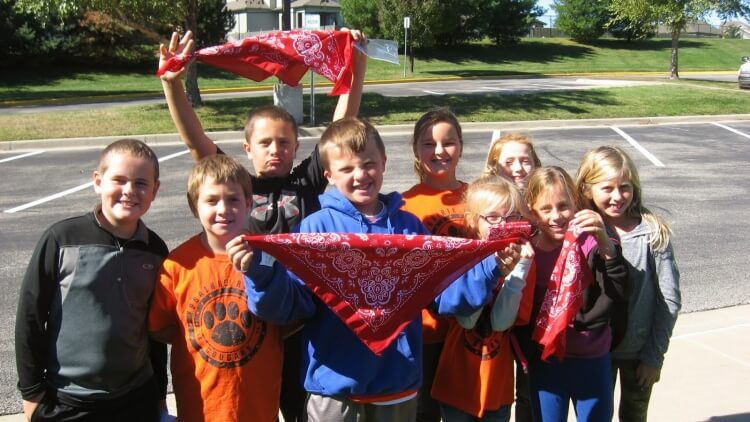The story of Welles Crowther is not only a heroic one, but an educational one as well. It displays many of the ideals that we try to instill in our students on a daily basis such as leadership, confidence, critical thinking, social responsibility, selflessness and persistence to name a few.

Welles Crowther grew up in Nyack New York, where he is remembered as a star athlete, community leader and the boy – soon-to-become man – with the red bandana. When Welles was a young boy, his father gave him two bandanas and some fatherly advice. His dad told him that one of the bandanas was for show and the other one was to blow his nose with. One of those bandanas was red and Welles had it with him everywhere he went. Whether it was in his pocket or under his lacrosse helmet he was never without his red bandana.
Upon graduating from high school Welles went on to play lacrosse at Boston College, and from there he went to work in the World Trade Center. Welles was at work on September 11th. He was in the buildings when they were hit and he remained in them when they fell. However, unlike many people trapped in the buildings that morning, Welles had an opportunity to get out. Instead, he chose to help others to safety.
The New York Times interviewed one person Welles saved. She talked about this man with a red handkerchief that took charge in the middle of a chaotic, terrifying situation. The man found a working staircase, grouped people together and led them to safety. He then turned around and went back up the stairs in an attempt to save more lives. Welles’ mother read the story in the Times referencing this hero with a red bandana. She contacted the women and sent her a picture of Welles. The women confirmed it was her son.
Welles Crowther lost his life in the World Trade Center saving the lives of others and each year I center a few lessons on his selfless sacrifice. One such lesson is called “Red Bandanas.”
In this lesson, I put 8-10 red bandanas filled with popcorn kernels and tied like a penalty flag in football on top of my cart. I explain to the students that these flags are not penalty flags, but are flags representing the qualities that Welles’ possessed and everyone is an official of those qualities.
As the students engage in their activity for the day, they are free to go over to my cart, grab a flag and throw it when they see someone taking on a leadership role or being compassionate. At the end of the class, the students who threw a flag jog to it, pick it up, and bring it to our closure discussion. The students holding the flags recognize the person that they saw displaying a positive characteristic and talk about what they saw and why it fits the day’s lesson.
Another way you can use Welles Crowther’s story to support learning in your classes is through having a conversation with your students about living the life you want to live and leaving the legacy you want to leave. When we discuss this topic, I ask the students to read a poem titled “The Dash” on my website and participate in an online discussion comparing that poem to Welles’ story.
The students share some pretty powerful connections. Those online discussions are private with only the students and me having access to the content. I then ask them to look at their own lives and find areas in the legacy they are currently cultivating that may not match up with the legacy they want to eventually leave, then try to take steps to alter their course. These ideas are shared privately and not discussed publically.
The story of The Man in the Red Bandana is inspiring and touching for anyone who hears it, but for our purposes as physical educators, it provides a tremendous opportunity to teach the skills that our students need the most, life skills.
If you want to see the ESPN E-60 piece on Welles Crowther you can find it here:
https://www.youtube.com/watch?v=wd2Jvu2brFA

